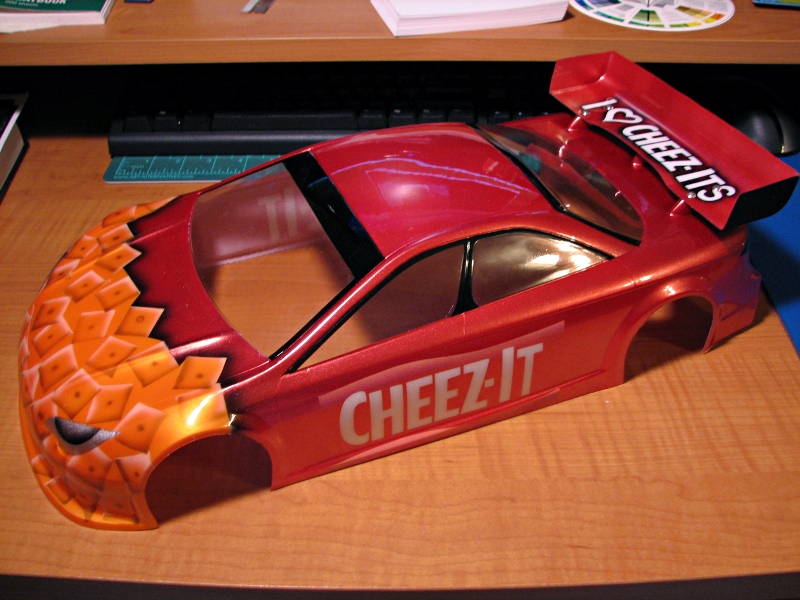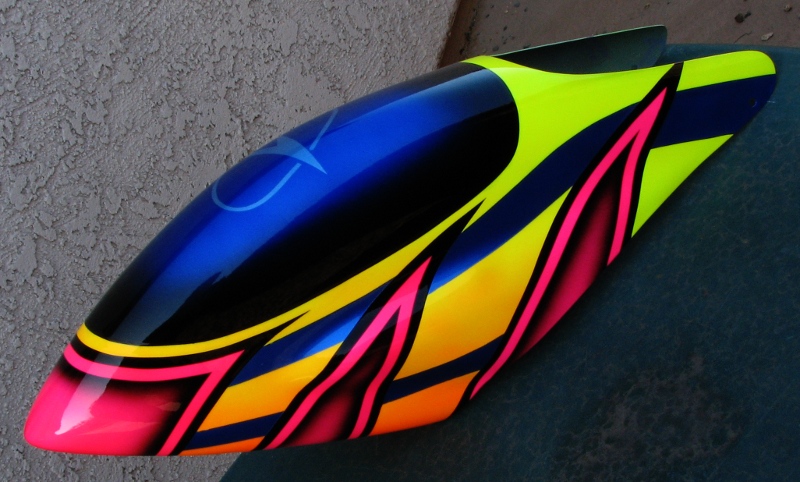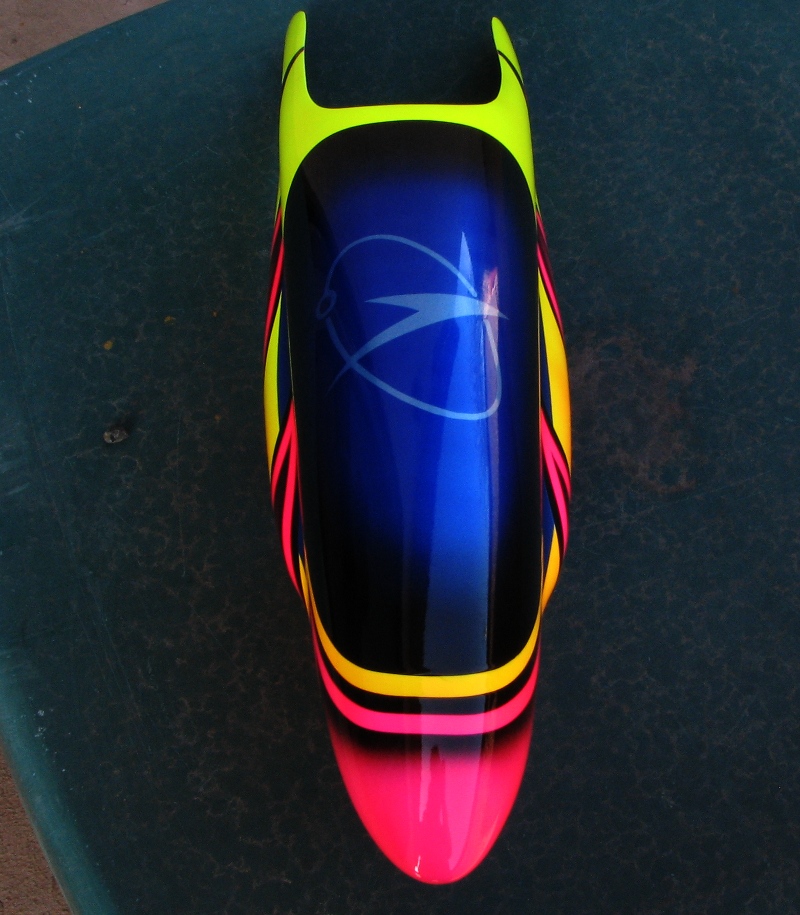For the past few months I have searched for a low-cost onboard glow heater. The cheapest one I could find was around $35 and looked poorly built, while the next step up was nearly $70. I decided to make my own onboard glow heater, here was the criteria:
- Did not need to be R/C. I just want one less thing to carry around and charge the night before.
- Powers off of a 5-Cell NiMH receiver pack, and should not draw too much current.
- Very reliable and simple.
This means you need a simple voltage regulator that will take 6V and drop it down to roughly 1.2V or 1.5V. Add a switch and maybe some lights or a buzzer to alert you when it's on ... and you're done. To make it reliable and fuel resistant I decided to cast my setup in epoxy. Here is what I finally came up with:

There have been three generations of my project. Each generation got progressively better and smaller, with less weight and a neater appearance.
First Generation: Voltage regulator, switch, piezo buzzer, two LEDs with resistors, and output connections. This first one was a complete mess and I did not even bother to take a photo. I wired it very poorly, and put it in a relatively large container. Having used approximately 1 ounce of 30-minute epoxy, when the stuff finally kicked off the thing got over 300F. This significantly melted the plastic container, and the switch failed. The epoxy did not get through the toggle opening, so it must have seeped in from the sides or below.
Second Generation: Voltage regulator, switch, piezo buzzer, one LED with resistors, and output connections. While I only took out one LED, I made this version much more compact and neatly wired. Looking for a smaller container to cast my project in, I settled on the clear dome from the new plastic packaging that Hitec uses with their micro servos. This one turned out perfect, but it still occupied much more space than necessary. I also realized that once a piezo buzzer is cast in epoxy, it gets much quieter :) I covered up the hole in the buzzer so the glue wouldn't harm it, but it just can't produce the noise it does when exposed directly to air.

Third Generation: Same as the second generation, but I ditched the buzzer and used two LEDs. This time I found some small blister packaging used to hold crimp-on wire connectors. The packaging was the perfect size, with a small ice cube shape.











